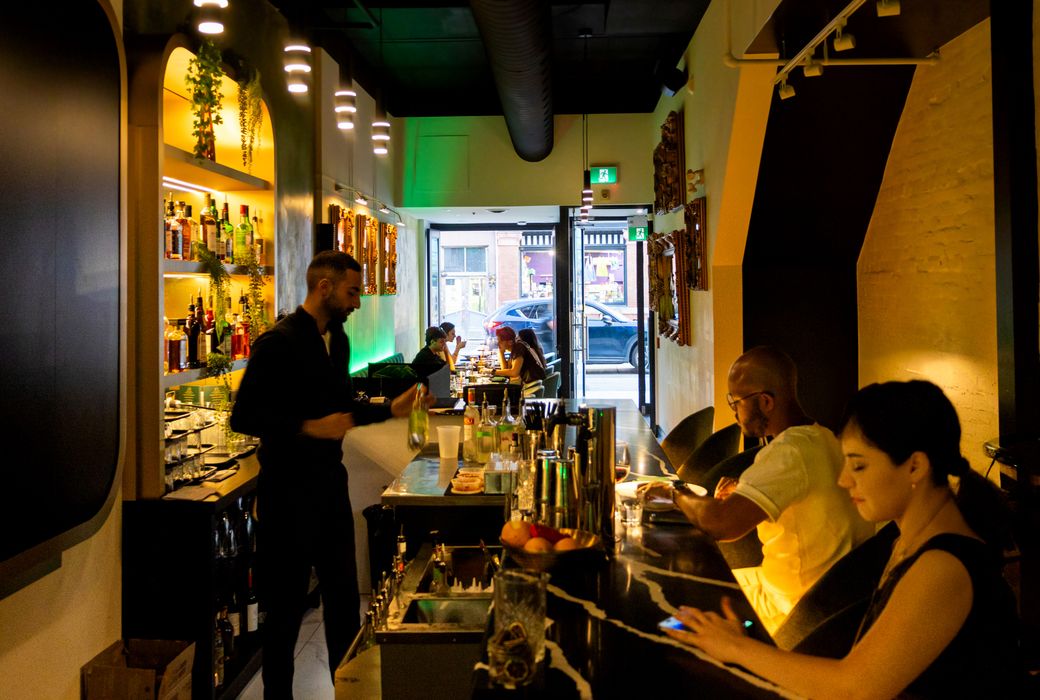The Little Jerry
The Little Jerry is a wine bar, sure, but first and foremost it's a room designed for listening to vinyl records that plays host to almost nightly DJs.
The name is exactly what you think it is, just a silly Seinfeld reference, but it does evoke the retro flair of the place.
Padding on the walls is designed to enhance sound and prevent it from bouncing around too much, so conversation can still be heard when music is at a high volume.
White anchovies ($13) are topped with sweet soy, sweet and spicy chilies and chives that add some pungency to the small, silky briny fish.
Sourdough crostini provides a foundation (you'll find a lot of bread here, because wine) and a smooth yuzu kosho cream cheese adds an indulgent hit of richness to the whole equation.
Heirloom carrot and raisin salad provides a veggie small plate for a reasonable $7, orange adding juiciness and walnuts contributing crunch.
Dressed with a white onion kombu vinaigrette, the raisins are also soaked in wine so they're plump and boozy.
Arctic char gravlax ($12) cures sashimi-quality, luscious Arctic char in sugar, salt and kombu. Again, sourdough accompanies, as well as capers and arima Sansho given a chop so they don't roll away.
A shard of crispy char skin is the smoky, crunchy icing on the cake, though it feels like in this case the schmear is a little lacking in comparison to the yuzu kosho cream cheese.
Steak tartare ($14) both incorporates and is plated with finely chopped ume pickled ginger, shallots, capers and more arima sansho.
Also made with anchovy, topped with an egg yolk and served with appropriately thinner crostini drizzled with caper oil, it's a well executed bite that feels like classic steak tartare with just enough of a twist.
Baked mushrooms and ume butter ($13) are the sleeper hit of the menu: oyster, king, shimeji and shiitake mushrooms baked in a cast iron pan with succulent but delicate plum butter and fragrant onions.
The spongy, snappy mushrooms do a good job of soaking up all that butter, but (you guessed it) a little extra bread helps as well.
Five ounces of Stefan Vetter Sylvaner from Germany goes for $13, a light but savoury whithe wine with notes of dried herbs. Most wines are low-intervention, but the list is mostly personal favourites.
They don't do cocktails, but you can always get an off-menu vermouth highball.
The sound system is comprised of Klipschorn corner horn speakers, a Condesa Carmen V mixer, and a McIntosh MC275 tube amp, an isolated DJ booth equipped with Modded Technics SL-1200 MK-2 turntables with fluid dampened Jelco Tonearms taking up residence in a corner.
Hector Vasquez









